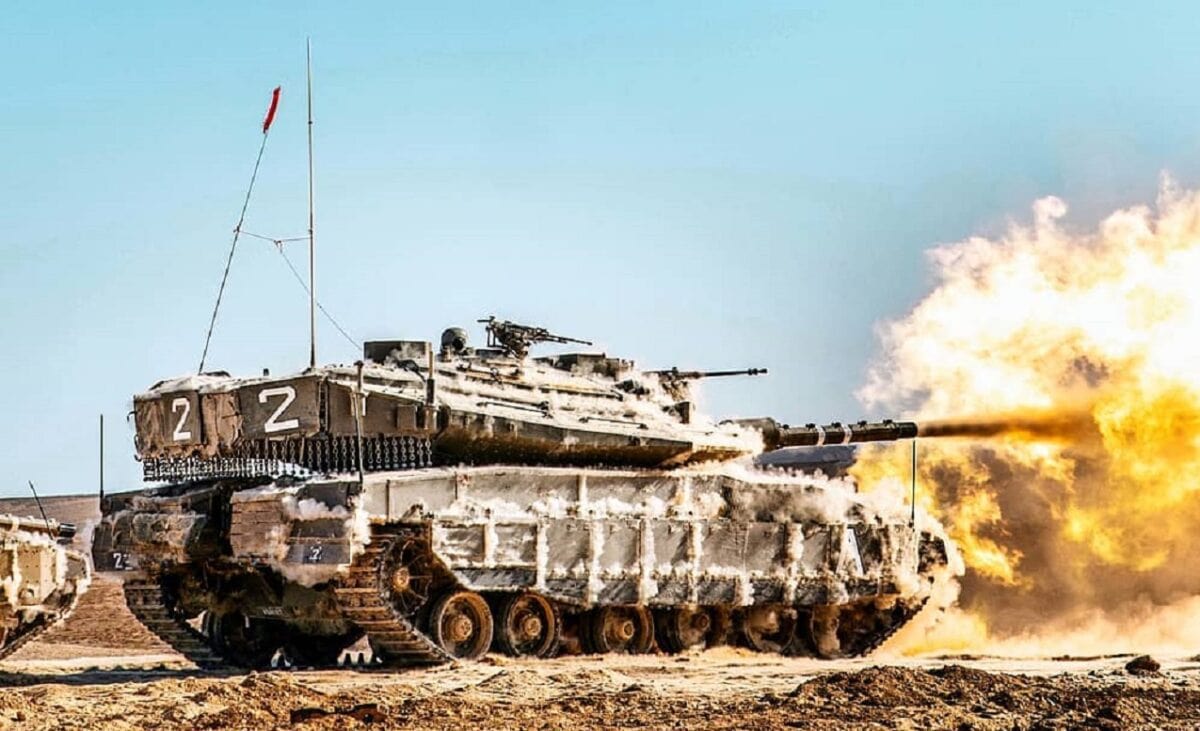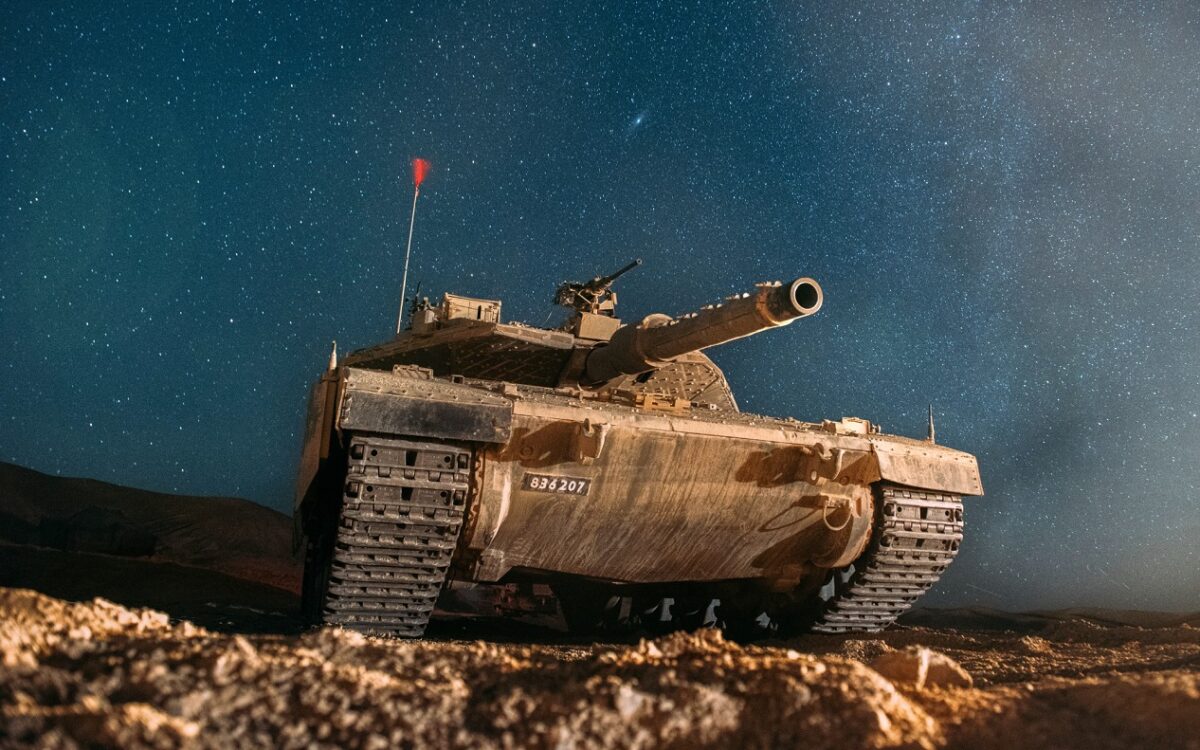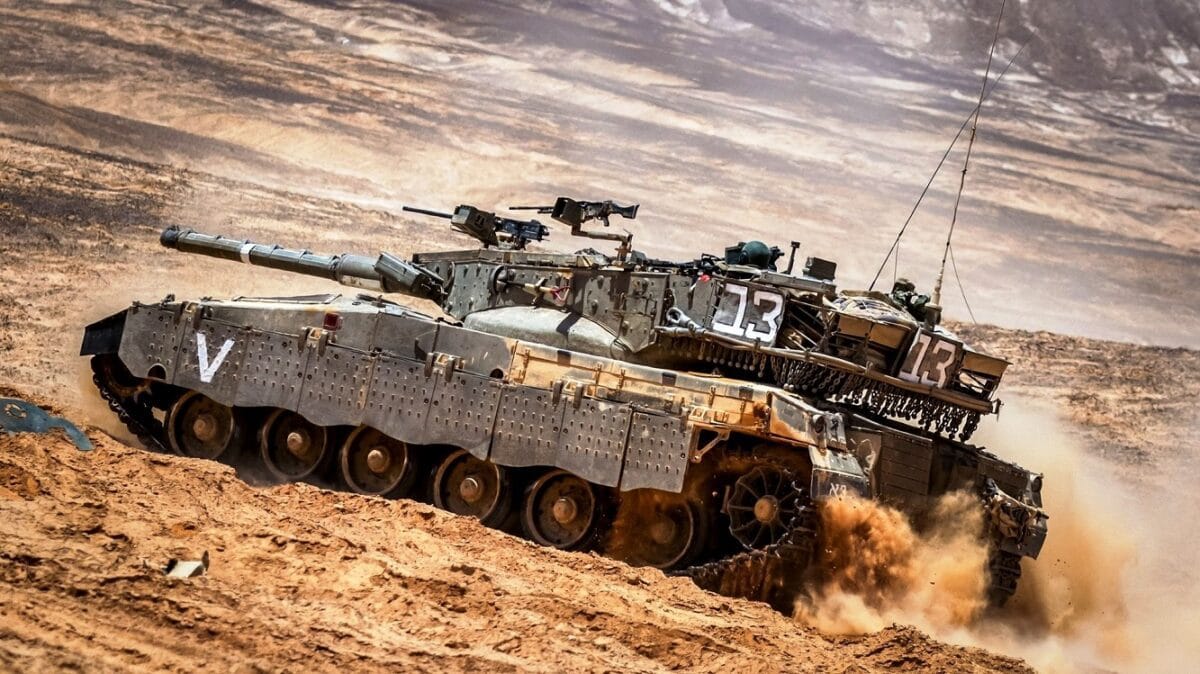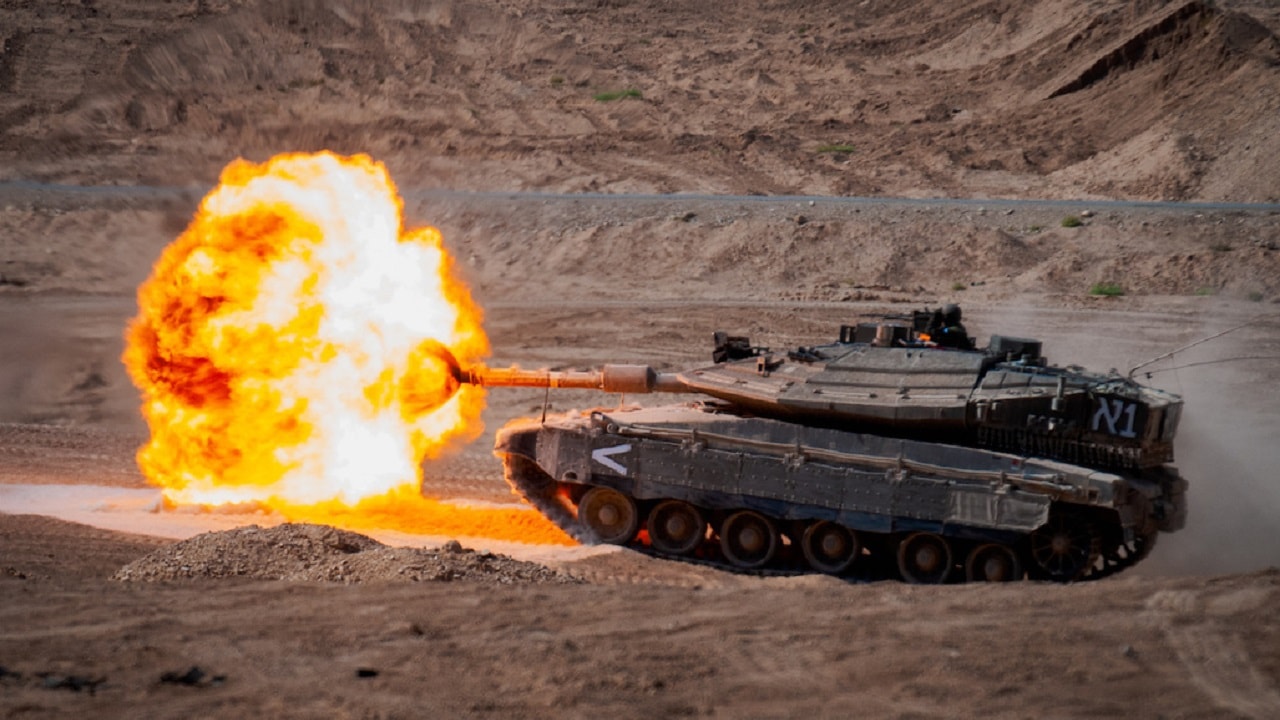While not as well known as the M1 Abrams tank or Russia’s T-14 Armata, the Israeli Merkava IV tank is a warrior on the battlefield. Could it be the best or one of the best tanks on Earth? Last July, the Israel Defense Forces (IDF) announced that it had formed the first all-female armored Merkava IV company to defend the country’s frontier as part of the mixed-gender Caracal Battalion. The unit was stationed along the Egyptian border for the first time, as part of an ongoing pilot program to assess the feasibility of female armored crews – who had completed their training at the IDF’s Shizafon Base in the Negev desert.
It was only in 2020 that the IDF launched the pilot program to determine if women could serve in the tank units, after a previous trial from 2017 to 2018 was deemed inconclusive. The units will operate the Merkava IV tanks, which have been outfitted with the latest capabilities and technological systems that the IDF has to offer.
The 65-ton Merkava IV is the latest in a series of main battle tanks (MBTs) that were developed by the IDF and which remain the backbone of the IDF’s armored corps. Development of the first Merkava – which means “Chariot” in Hebrew – began in the mid-1970s. It was designed by General Israel Tal following the armored clashes of the Yom Kippur War and after the failure to purchase Chieftain tanks from the United Kingdom.
The goal of the domestically-build tank was to create a platform that could take on Soviet tanks that were in service with many of Israel’s Arab rivals. The resulting Merkava Mk I was laid out in a rather unorthodox manner compared to contemporary Western and Soviet tanks, featuring a design more akin to some infantry fighting vehicles. Instead of having the engine at the rear, the engine was moved in front of the crew compartment, with the turret placed further back on the chassis. The Merkava Mk I entered official service in 1979, and it was used extensively in the 1982 Lebanon War, where it fought against Soviet-made Syrian T-72s in the Bekaa Valley to great success.
The Mk IV is the most recent variant of the Merkava MBT. Development began on it in the late 1990s and it entered full production in 2004. It is slightly larger than the Merkava III, which has been in service with the IDF since 1990. It is equipped with an all-electric turret developed by Elbit and subsidiary El-Op; and it features a single commander’s hatch – a design decision that was meant to provide additional protection to the roof with a passive armor system. In addition, the turret – which is mounted to the back side of the hull – is equipped with chains that hang down vertically to help detonate any anti-tank devices with a High Explosive Anti-Tank (HEAT) warhead before they can make impact with the tank’s main armor.
Packs a Punch
The main armament of the Merkava IV is a 120mm smoothbore gun, developed by Israel Military Industries based on the successful cannon employed on the previous generation MBT. The main gun can fire a full range of 120mm ammunition types, including 120mm APFSDS-FS (kinetic) rounds, and their training derivatives, HEAT (hollow-charge) types and anti-personnel/anti-material ammunitions.
In addition, secondary armament consists of a 7.62 mm coaxial machine gun, 7.62 mm machine gun mounted on the right side of the turret roof and an internally mounted 60 mm breech-loaded mortar. The roof-mounted machine gun can be remotely aimed and fired by the commander from within the turret and traversed to full 360-degrees.
The Merkava IV is equipped with a computer-controlled fire control system that includes line-of-sight stabilization in two axis, a second-generation television sight and automatic thermal target tracker, a laser range finder, an improved thermal night vision system and a dynamic cant angle indicator. The tank commander’s station in the turret is fitted with a stabilized panoramic day and night sight. The tank’s integrated operating system provides advanced data communications and battle management. The tank is capable of firing on the move even at moving targets.
The tank is serviced by a crew of four – a commander, loader, gunner and driver – and can also carry eight infantry soldiers. Soldiers are protected inside the vehicle, which is equipped with a composite matrix of laminated ceramic-steel-nickel alloy with a sloped modular design. It provides protection against a range of threats, including air-launched precision-guided missiles and advanced and top-attack anti-tank weapons. Automatic fire detection and suppression have also been installed on the Merkava IV.
The current generation Merkava is powered by a V-12 diesel engine, which is rated at 1,500hp. The engine compartment and one fuel tank are at the front of the tank while two additional fuel tanks are at the back. The tank has a top speed of 60 km/h and a range of 500 km.

Israeli Merkava Tank. Image Credit: Creative Commons.

Merkava Tank

Merkava Tank. Image Credit: Creative Commons.
The Merkava IV is not offered for export, yet many of the systems and components have been exported. The IDF is already reportedly working to adopt the next-generation Merkava V – dubbed the “Barak” or “Lightning” in Hebrew” – within the next. Sometimes you can improve on near perfection.
Now a Senior Editor for 1945, Peter Suciu is a Michigan-based writer who has contributed to more than four dozen magazines, newspapers and websites. He regularly writes about military hardware, and is the author of several books on military headgear including A Gallery of Military Headdress, which is available on Amazon.com. Peter is also a Contributing Writer for Forbes.

